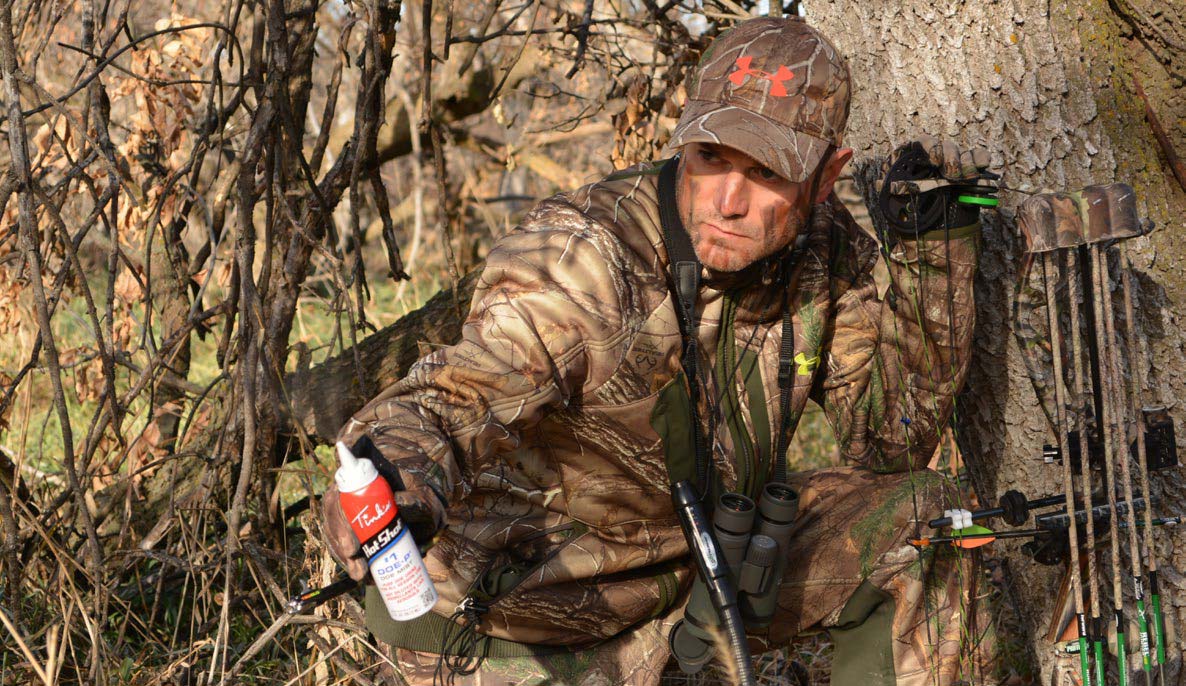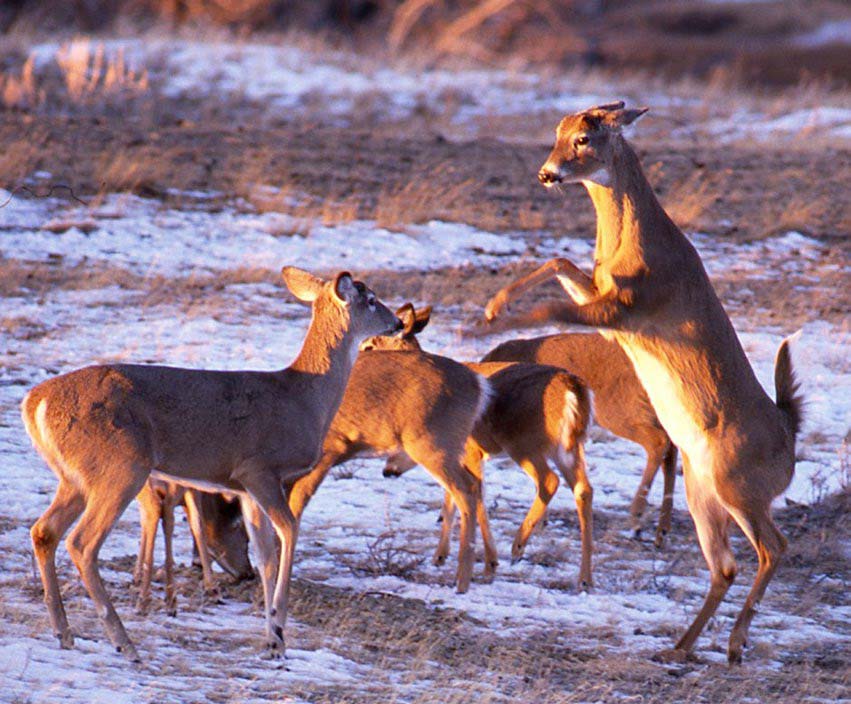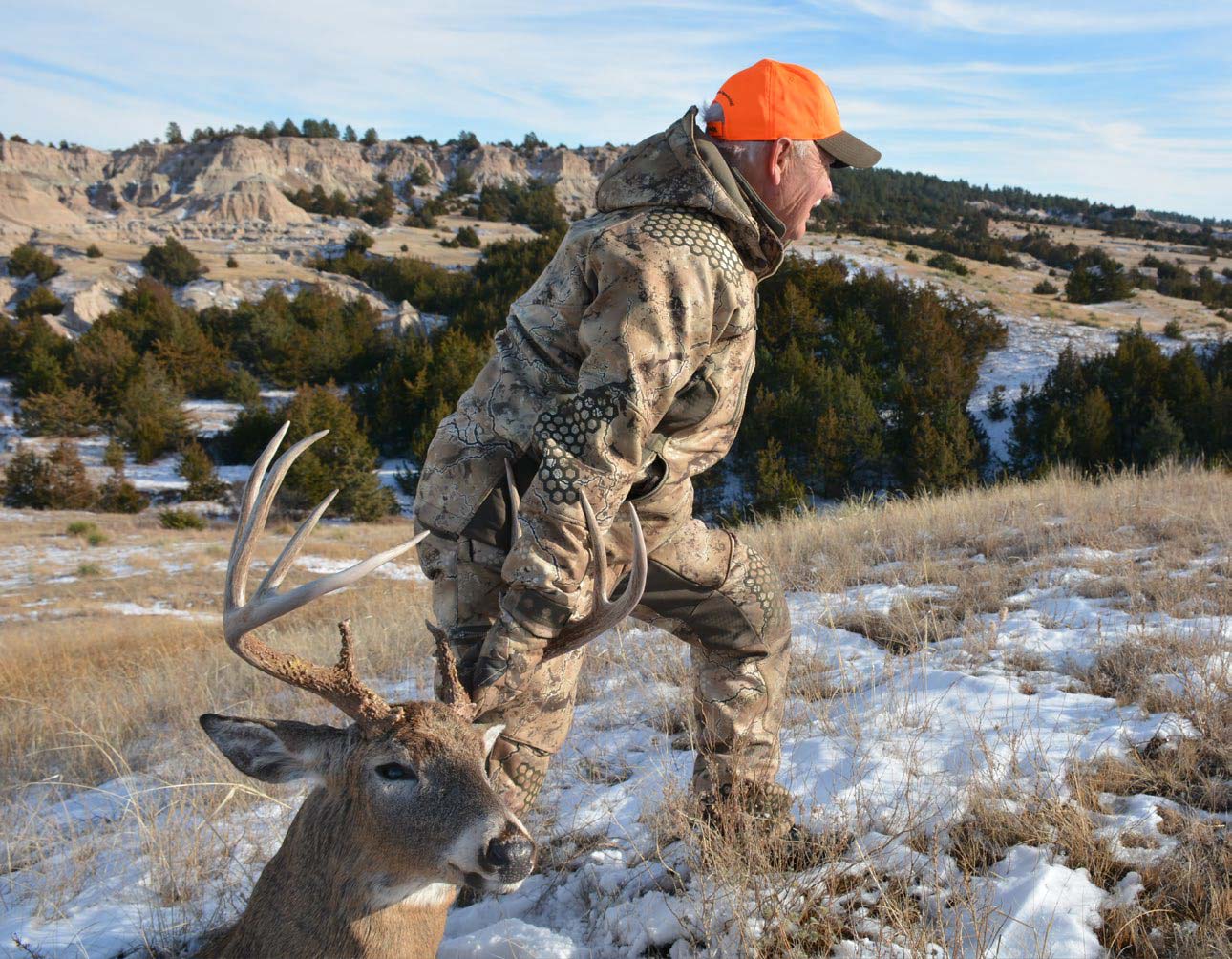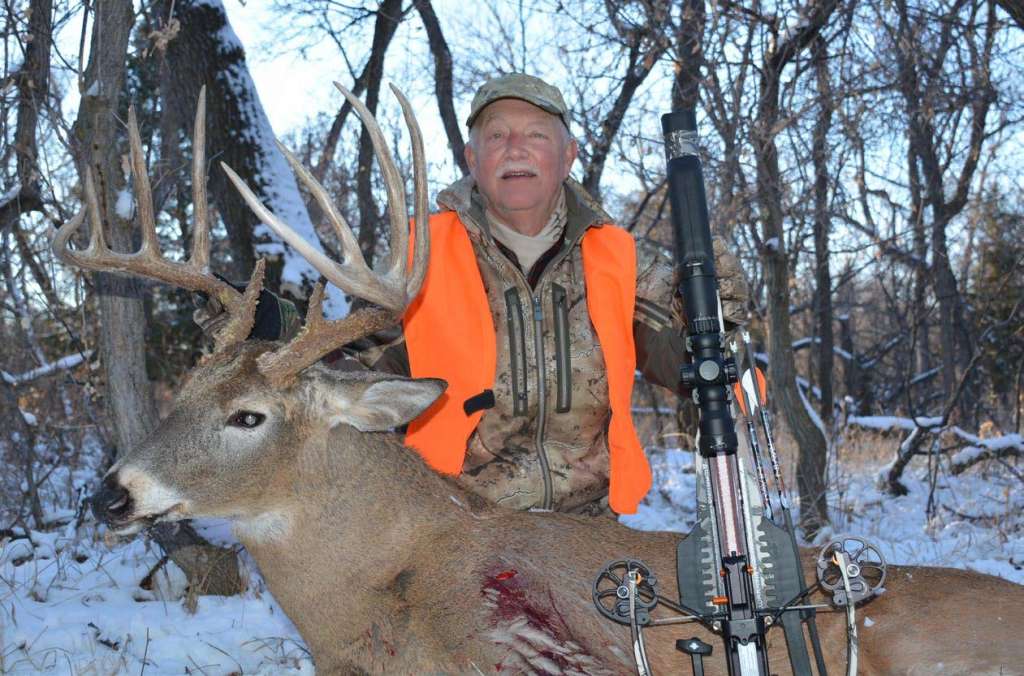Temperatures drop, winds howl, and snow falls, transforming many hunters into football tans. Remember, every seven-year-old Boone & Crocket buck had to survive its hunting season as a six-year-old. We all dream of that once-in-a-lifetime deer and sometimes it happens in the fourth quarter.
With greatly reduced hunting pressure in late season, deer return to normal routines, primarily bedding and feeding. Any uncut agricultural field becomes a deer magnet and snow cover makes finding trails and large tracks quite easy. In some areas, yearling does come into heat, igniting mating activity that makes bucks vulnerable to rattling, grunting and other rut tricks.
Late Christmas Present
Phillip Vanderpool loves bow hunting in Kansas for deer and turkeys. He’d hunted a particularly productive property early in the season but didn’t score- a bit unusual for the experienced archer. “My host really wanted me to take a deer, so he invited me to hunt after Christmas, a time when he had no booked hunters.
Vanderpool was delighted to accept his host’s offer and headed for a ground blind just after lunch, not taking any chances with the evening deer movement. Before heading to a well disguised ground blind, he followed his complete scent regimen wearing freshly washed clothes, using scent eliminating base layers and spraying down completely.
“I knew I was down to the wire, with only a few days left in the season, so I was extremely alert,” remembers Vanderpool. Around 4:00 pm a big doe fed past the blind and then turned to look back. “I noticed my camera operator getting really alert and suddenly mouth “big buck” with great expression. Suddenly, this huge, tall buck followed the doe. The camera is rolling, it’s right in front of me, and it looks like a giant. Slowly, I came to full draw just as it turned completely away from me. Holding at full draw, time seemed to stand still, and my heart pounded. Finally, the doe moved, the buck quartered away, and I ran the arrow right through the last rib, aiming for the opposite shoulder. I immediately saw the blood trail began.”

It’s Not Over Till It’s Over
By late season, either hunter passion has cooled with the weather or the most successful hunters have filled their freezers. You’ll find that even the most popular areas have little if any hunting pressure.
The stands you hunted early in the year may produce, yet deer herd up in late season and become laser focused on food sources. Don’t overlook the suburbs as a refuge for hungry deer. As farm crops disappear or are depleted by game, deer will move toward small homesites where they can browse on small trees and shrubbery, often to the chagrin of homeowners.
Consider A Small, Controlled Deer Drive
In deep snow or bad weather, it may make more sense to organize an archery drive to push whitetails from where they are to where you want them to be. This may sound simple, yet experienced deer drivers and mature whitetail bucks know the ropes and controlling whitetail behavior is never easy.
One of my best whitetails fell to a deer drive involving just four people during a muzzleloading season. One blackpowder rifle posted along a known escape route while I hid in the middle of a thicket.
“The shot would be close, and I instantly raised the Raven crossbow, watching the buck’s legs in the scope. As its shoulder appeared in a tiny opening I released, catching the animal through the vitals.”
I’d hunted this spot several times with a muzzleloader in previous years and we covered the edge of a thick patch of cedars and brush that broke into an open field. Normally, we watched the edges where deer often paused for a second before running to escape. This time I posted in the middle of the thick stuff with my crossbow where deer often milled around before fleeing.
The Plan Comes Together
On archery drives, those who push move slowly, making enough noise to move deer, yet not terrify them. You want that big buck to think it’s sneaking away from danger, exactly the situation I encountered. Once inside the thick cover at the base of a steep hill, I located two distinct trails with 20-yard shooting lanes at right angles to the push. With the drive about to begin, I hastily sat against a bush, swung my bow to test movement and got ready. In the next minutes or I heard a stick snap and saw brown legs moving toward me. Instantly, I raised the bow as the buck stopped behind a cedar tree. The range was 10 yards and I hoped it would make one more step, but it circled back toward another opening. Although I didn’t get a shot, I saw a heavy white rack and knew this was a shooter.
The buck searched for an escape route, stepped into a small opening, and instantly saw me… but too late. The Mission 320 MXB sent a Beaman Carbon shaft through its chest, before it could bolt.

Firearms Can Be Friends
I frequently bow hunt in late rifle and muzzleloader seasons with excellent success, primarily because I hunt where firearm hunters will not. The trick is to pack plenty of patience and hunt the thickest cover I can find.
Two seasons ago, I hunted in the Great Plains with a blizzard forecast during the trip. In the past I’d hunted a river bottom that was choked with cedars and underbrush that limited visibility from 10 to 20 yards, exactly the kind of cover I like… and gun hunters avoid.
I had to drive non-stop to reach hunting camp the eve of the storm, which howled and raged throughout the night. I was counting on the plummeting low pressure to signal deer to move into thick cover for browse and protection.
I waded a creek at daylight and was excited to see deer tracks in the fresh powder. The brunt of the storm had passed, yet a steady Northwest wind and light snow continued to fall.
This remote spot required a considerable hike to reach and by 9:00 I was shivering in the near zero temperatures. I really wanted to sit this location the entire day, but realized the intense chill was beyond my capacity to cope.
Hunt The Long Game
Fully intending to stay for the day, I believed it best to walk back to my vehicle, drive to camp, warm up, and return. Walking into the northwest wind was a challenge, but a full head cover and my Pnuma gear broke the wind.
Back in camp, I drank hot coffee, took a hot shower which really warmed my body, redressed and headed back. Since I hunted from the ground, I took a thick foam pad that elevated my core slightly and insulated me from the snow.
I sat near a huge rub and wondered what had happened during my 90-minute absence. Soon a large doe and two fawns passed at 15 yards, a sign that deer were still moving. Suddenly, I caught movement as a large buck sniffed the ground and followed their trail.
The shot would be close, and I instantly raised the Raven crossbow, watching the buck’s legs in the scope. As its shoulder appeared in a tiny opening I released, catching the animal through the vitals. Although the buck seemed to have a substantial rack, there was neither time nor opportunity to see its headgear.
Following the blood trail from the Rage two-blade was easy and I soon came upon my best deer to date. The big 10-point would score 163 P&Y and I was truly delighted. After tagging the buck, I trudged back through the snow to get help. Ice pellets bit my face as the northwest wind continued to blow. The season was late, the weather brutal, yet I could NOT have been happier.

SEVEN LUCKY TIPS FOR LATE SEASON SUCCESS
Focus On Food
Rethink your early-season stands. Re-scout your area with a focus on agricultural crops, acorn patches, and extensive browse. Also, deer love suburban shrubbery.
Practice In The Cold
Consider reducing your draw weight by a few pounds to assure you can smoothly come to full draw while wearing heavy clothes. How do gloves affect your grip, release, or trigger finger?
Beat The Bulk
Down is ideal for insulation yet can be bulky and interfere with the bowstring. The author chose Pnuma gear for insulation that’s designed for movement and performance.
Think Thick
Bad weather will force deer into thick cover. Even in a late rifle or muzzleloading season you can score with stick and string. Don’t forget to wear required hunter orange.
PM Trumps AM
Getting to a morning stand or ground blind is often noisy and obtrusive, especially in snow cover. Opt for an early afternoon sit for better access and a warmer wait.
Down To Earth
Vanderpool often hunts from a ground blind. Allow them to sit outside to reduce scent, post and brush in with leaves and branches. The worse the weather, the better your blind.
Consider Small Drives
Deer often herd up in late season and may travel on traditional trails. Drivers should move slowly, quietly, and crosswind, while standers wait at the edge of thickets and ambush spots.
By Joe Byers
Per our affiliate disclosure, we may earn revenue from the products available on this page. To learn more about how we test gear, click here.





